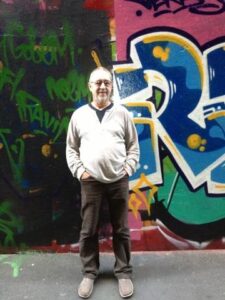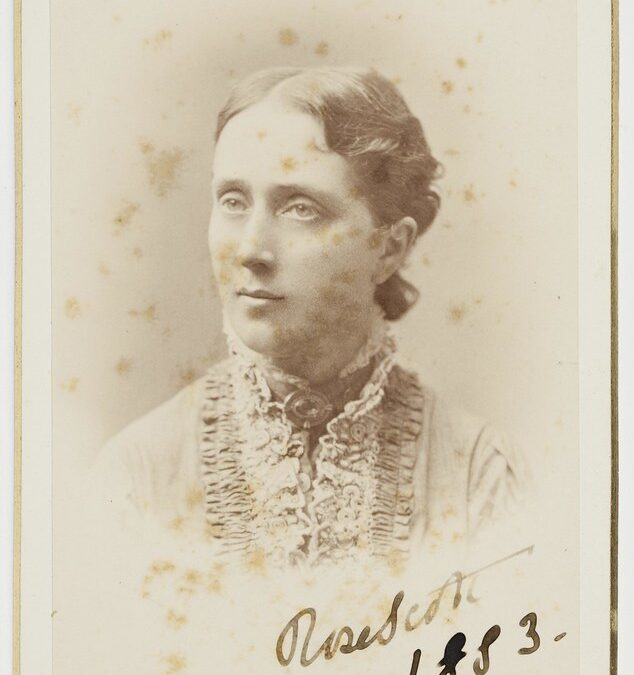by Bill Holloway
 Australian suffragists led the world in gaining the vote for (white) women. I attempt here to provide an overview of the principal players.
Australian suffragists led the world in gaining the vote for (white) women. I attempt here to provide an overview of the principal players.
Suffragism was state (colony) based up until Federation on 1 Jan 1901, and voting rights for the first federal election were based on voting rights in the individual states. In 1902 the Commonwealth Franchise Bill was enacted extending the franchise to women residents over the age of 21, but not to non-Europeans, enabling white women to vote in the second federal election, and to stand for Parliament.
Summary:
| Right to vote | Right to stand for Parliament |
|
|---|---|---|
| Commonwealth | 1902 | 1902 |
| South Australia | 1895 | 1895 |
| Western Australia | 1899 | 1920 |
| New South Wales | 1902 | 1918 |
| Tasmania | 1903 | 1921 |
| Queensland | 1905 | 1915 |
| Victoria | 1908 | 1923 |
I came to be interested in the suffragists through my reading of early Australian women’s literature, and in particular Miles Franklin who became friends with a number of them after the furore accompanying the publication of My Brilliant Career (1901).
Franklin was invited to stay with Sydney socialite and suffragist Rose Scott in 1902 (see My Career Goes Bung where Scott is the model for Mrs Crasterton) and Scott gave her introductions to, in particular, Vida Goldstein in Melbourne. From 1906-1915 Franklin was in Chicago, working in the (US) National Women’s Trade Union League alongside another Australian activist, Alice Henry. In 1915 she moved to London where she was already a member of the Women’s Freedom League – a breakaway from the Pankhursts’ Suffragettes. In the 1920s, in London, she became life-long friends with Melbourne suffragists Mary Fullerton and Mabel Singleton, which is the subject of Sylvia Martin’s excellent Passionate Friends (2001).
My ‘suffragist’ reading is confined to Melbourne and Sydney, and I guess Adelaide if you include Catherine Helen Spence who was a supporter – and a candidate for the 1897 Constitutional Convention – but her political work was directed more towards how to vote, not who should vote.
Key figures in the Australian suffrage movement included: from South Australia Mary Lee and Catherine Helen Spence; in Western Australia Edith Cowan; from New South Wales Maybanke Anderson, Louisa Lawson, Dora Montefiore and Rose Scott; from Tasmania Alicia O’Shea Petersen and Jessie Rooke; from Queensland Emma Miller; and from Victoria Annette Bear-Crawford, Henrietta Dugdale, Vida Goldstein, Alice Henry [and] Annie Lowe (wiki).
Mary Lee (1821-1909), came to Adelaide from Ireland, a widow in her fifties, initially to nurse her dying son, but stayed on to become influential in social justice circles. With Mary Colton she founded in July 1888 the South Australian Women’s Suffrage League, later joined by Catherine Helen Spence. With the election of a Labour government in 1894, women’s suffrage became law in 1895, making all South Australian women (Aboriginal and white) the first in the world to be able to both vote and to stand for parliament.
Edith Cowan (1861-1932) is best known as the first woman to be elected to an Australian parliament (WA Legislative Assembly 1921-1924). An orphan after her father was hanged for the murder of her step-mother, at 18 she married the brother of the Misses Cowan whose school she attended. “She was the Karrakatta Women’s Club’s first secretary in 1894 and later vice-president and president. There Perth’s leading women [including Daisy Bates] mastered public speaking and shared their reading on health, literature and women’s rights: Cowan’s included Olive Schreiner, J. S. Mill and Charlotte Perkins Stetson (Gilman).” The Karrakatta Club became involved in the campaign for women’s suffrage, successfully gaining the vote for women in 1899.
Jessie Rooke (1845-1906), suffragist and temperance reformer, came out to Australia from England in the 1860s. She became active in the Women’s Christian Temperance Union – men’s drunkenness was the motivator for a great many early women activists. By 1894 she was in Tasmania and president first of the Burnie WCTU and then, in 1898, of the Tasmanian branch, which became the focus of the women’s suffrage movement. As a WCTU delegate in 1902 to the International Council of Women Conference in Washington, she worked with Vida Goldstein in supporting the campaign of the United Council of Women’s Suffrage for Federal adult suffrage. Women obtained the vote in Tasmania in 1903.
Emma Miller (1839-1917) seamstress, women’s rights and labour activist, and Unitarian came out to Queensland from Derbyshire in 1879. As a shirtmaker, in 1890 Emma helped to form a female workers’ union, mainly of tailoresses. In 1891 she gave evidence to the royal commission into shops, factories and workshops and marched with shearers’ strike prisoners when released. She was the first woman to travel west organizing for the Australian Workers’ Union and was the first woman member and a life member of the Brisbane Workers Political Organization. She championed equal pay and equal opportunity for women and was foundation president of the Woman’s Equal Franchise Association from 1894 to 1905, when women’s suffrage was achieved.
 The Womanhood Suffrage League of NSW (photo by Freeman Bros Studio, 1892. State Library of NSW ON 219/96).
The Womanhood Suffrage League of NSW (photo by Freeman Bros Studio, 1892. State Library of NSW ON 219/96).
Wikipedia names the women, but gives the year as 1902.
Rose Scott (1847-1925), not in this picture, was well off, a feminist and single (life, she said, was too short to waste it in the service of one man). Her regular Friday evening literary and political salon at her home in Woollahra, from 1882, made her a Sydney celebrity. In 1889, with Maybanke Anderson, she founded the Women’s Literary Society, from whose members the Womanhood Suffrage League was formed in 1891.
The Australian Woman, started in 1894 was the League’s official magazine, though for a long time meetings of the League were held in the office’s of Dawn, Louisa Lawson’s newspaper for women.
Louisa Lawson (1848-1920) lived in rural poverty until 1883 when she left her husband and moved herself and her children to Sydney. In 1887 she bought a small printing business and failing newspaper. “A year later she started Dawn, announcing that it would publicize women’s wrongs, fight their battles and sue for their suffrage. It offered household advice, fashion, poetry, a short story and extensive reporting of women’s activities both locally and overseas. [It] was an immediate commercial success.” When her husband died at the end of 1888, leaving her £1100, she enlarged the printing plant and accepted job printing. Within a year she was employing ten women, including, to fierce union opposition, female printers.
In May 1889 Louisa launched the campaign for female suffrage and formed the Dawn Club where women could meet regularly to discuss ‘every question of life, work and reform’ and to gain experience in public speaking. On the formation of the Womanhood Suffrage League in 1891, she was invited onto the committee, where she became an active campaigner.
Suffrage for white women, at the state and Federal level, was achieved in 1902. Lawson had been severely injured in an accident in 1900, and in 1905 Dawn ceased publication.
We wrote in these pages last week about Vida Goldstein (and last year about Louisa Lawson). I’ll look here at some other Victorian women who these days are less well known.
Annette Bear-Crawford (1853-1899) was born in Melbourne, but her father, the founder of Chateau Tahbilk winery, moved the family back and forth between Victoria and England. After finishing her schooling in England Annette trained in social work, gaining experience of work in city slums and in London’s New Hospital. She met leaders of the women’s movement and became well known as an active member of the National Vigilance Association. In April 1890 she rejoined her mother in Victoria and became a leading force in the growing women’s movement.
“With the support of the Woman’s Christian Temperance Union, she formed the Victorian Women’s Suffrage (Franchise) League. Then, on her initiative, the United Council for Woman Suffrage was founded in 1894, with representatives from organizations interested in the cause; she was first president and later honorary secretary.”
In November 1898 she left for England to attend the Women’s International Conference. Her husband joined her in London only three weeks before she died of pneumonia, on 7 June 1899, aged 46.
Henrietta Dugdale (1827-1918) came out to Melbourne from England in 1852. From 1869 she was “a pugnacious pioneer of the Woman Movement in Victoria”. In 1883 she wrote the booklet A Few Hours in a Far Off Age; in 1884 she was co-founder (with Annie Lowe) and president of the Victorian Women’s Suffrage Society, the first organisation of this kind to be established in Australia.
“The weapon of emancipation was the suffrage whereby women could achieve equal social, legal and political privileges with men. Progress also involved elevating the working classes through a more equitable distribution of wealth and the introduction of the eight-hour day. She condemned the monarchy as a reactionary institution constricting human advancement and she bitterly opposed imperial federation; Christianity was another despotism formed by men to humiliate women, and most Christians were intolerant hypocrites. She described herself as a believer in ‘true ethics’ rather than religious morality.” (Janice N Brownfoot, ADB, 1972)
Alice Henry (1857-1943) was a journalist and Fabian socialist. She was active in women’s clubs and the women suffrage campaign, and gained a reputation as a courageous public speaker in support of social change. She left Melbourne in 1905 and a year later was in Chicago where Margaret Dreier Robins invited her [and shortly after, Miles Franklin] to work for the National Women’s Trade Union League of America where, as lecturer, as field-worker organizing new branches, and as journalist, she became a key figure in the campaign for woman suffrage, union organization, vocational education, and labour legislation.
Cecilia John (1877-1955) was a singer, a feminist, a pacifist. She was “passionate” friends with Vida Goldstein with whom she attended the 1919 Women’s International Peace Conference in Zurich. Earlier, she was a member of Goldstein’s Women’s Political Association and with Goldstein she formed the Women’s Peace Army “which called for the abolition of conscription and militarism, for equal rights for women and control of production by the people.”
Women’s suffrage in Victoria was constantly thwarted by the state’s upper house, the Legislative Council, until it finally got through in 1908.
.
Earlier posts in this series:
The Independent Woman in Australian Literature
Bev Roberts ed., Miss D and Miss N: An Extraordinary Partnership (review)
Elizabeth Macarthur
Eleanor Dark, Timeless Land trilogy (review)
Caroline Chisholm, Married and Independent
Caroline Chisholm, Radical
Catherine Helen Spence, Woman’s Place in the Commonwealth
Catherine Helen Spence: An Autobiography (review)
Clare Wright, You daughters of freedom (review)
Janette M Bomford, That Dangerous and Persuasive Woman: Vida Goldstein (review)






Thank you for this informative post. These women should be household names.
Yes, and it’s hard to see why Edith Cowan is (here in WA anyway) and the others are not.
Michelle Scott Tucker is currently working on a biography of Louisa Lawson, which should lift at least her visibility and maybe that of the women she campaigned with, like Rose Scott.
Great overview – thanks!
I can’t see that anyone has written a book about the Australian suffragist movement as a whole, and this was my first shot at pulling the strands together. I’m counting on your Lawson biography to at least give us an overview of the NSW women’s suffrage movement. I wonder how defensive Lawson was, working with society women.